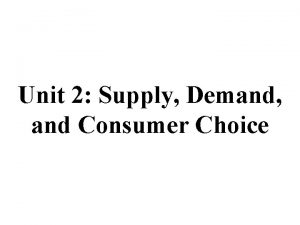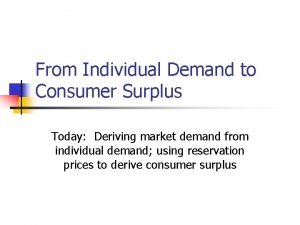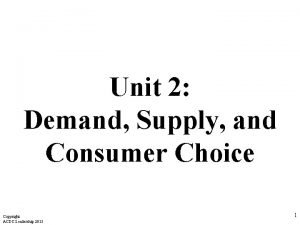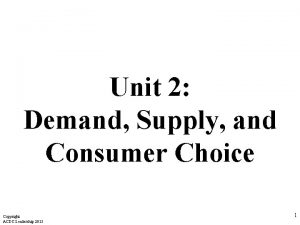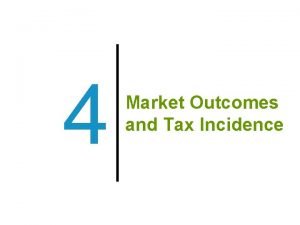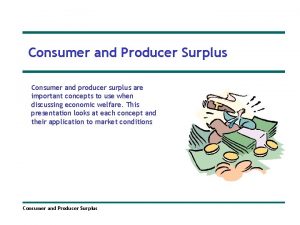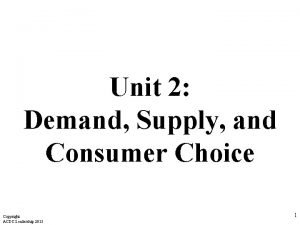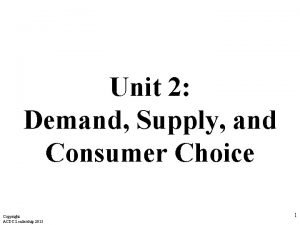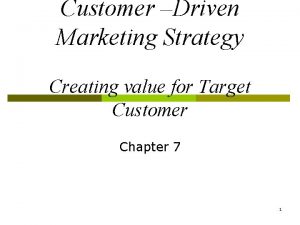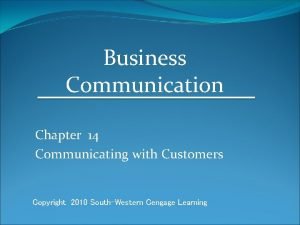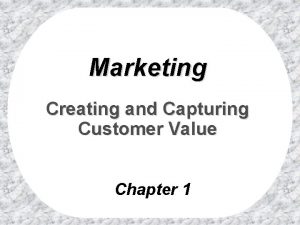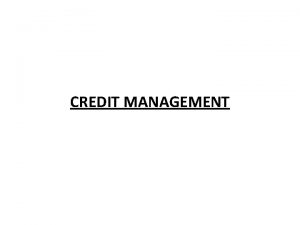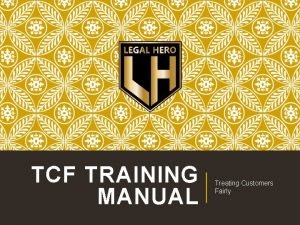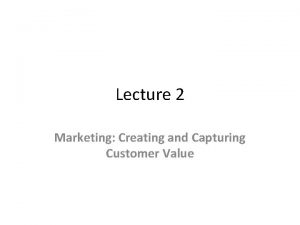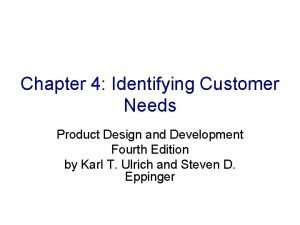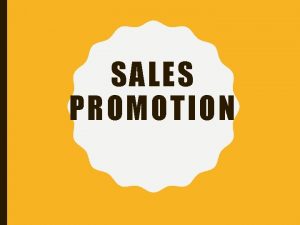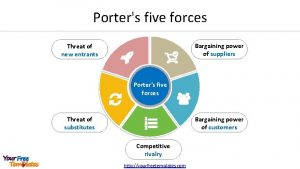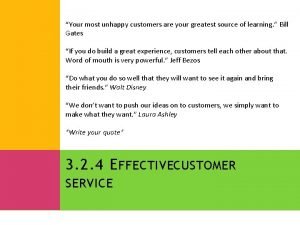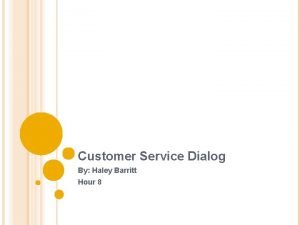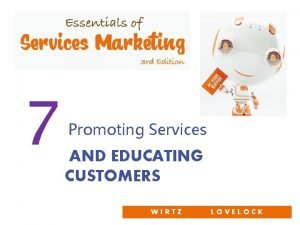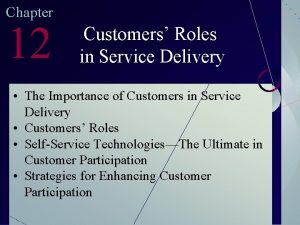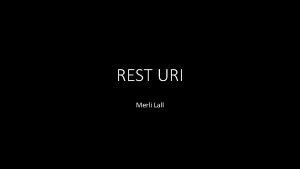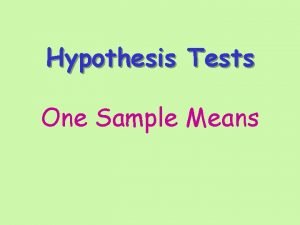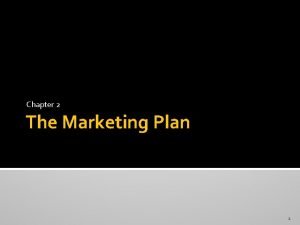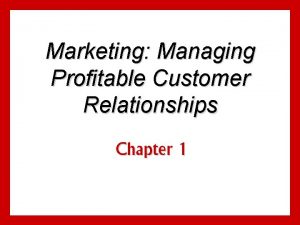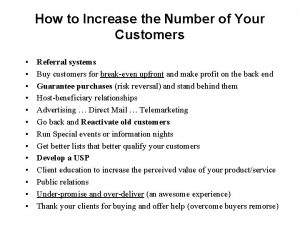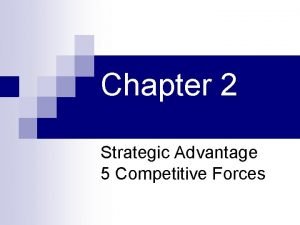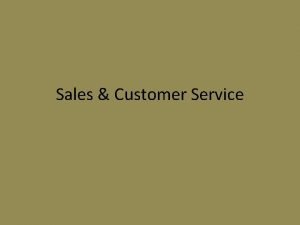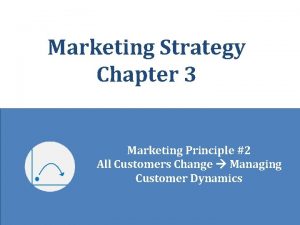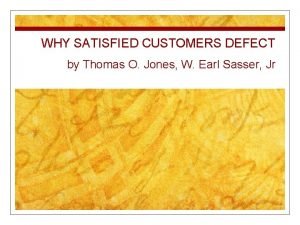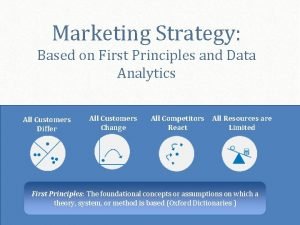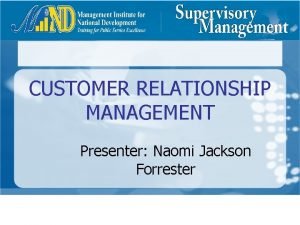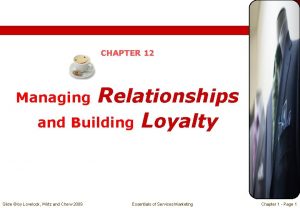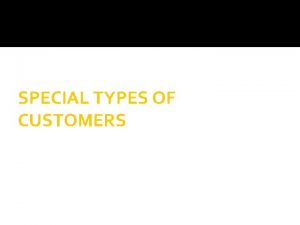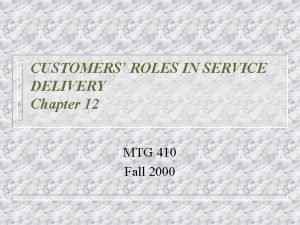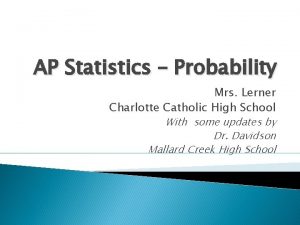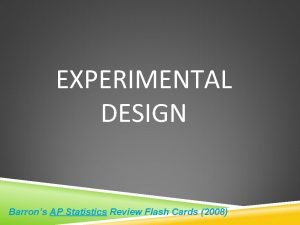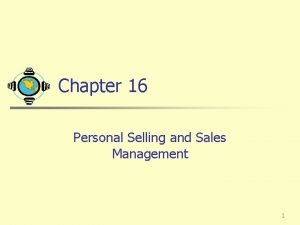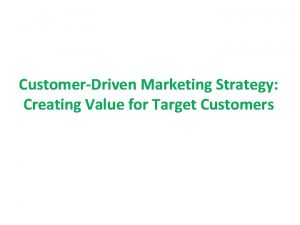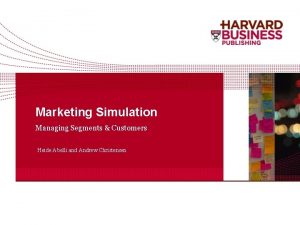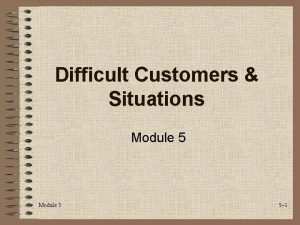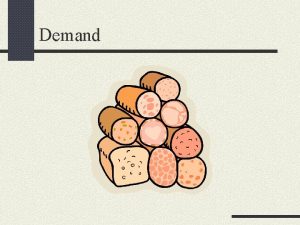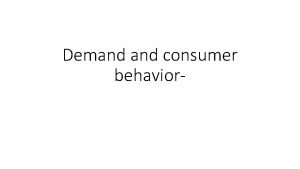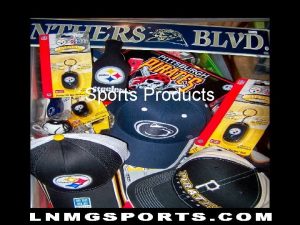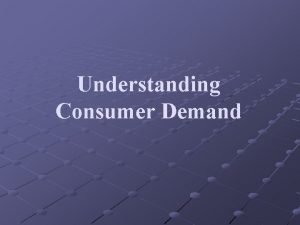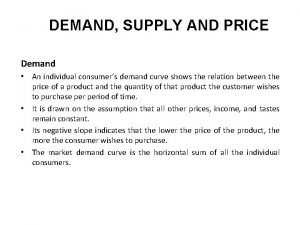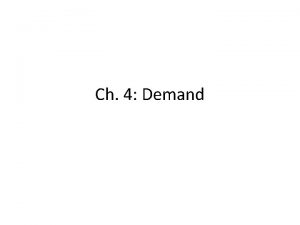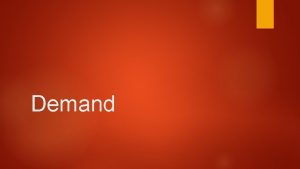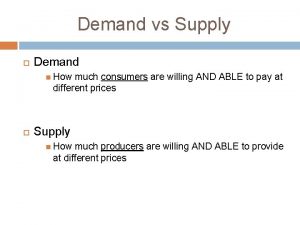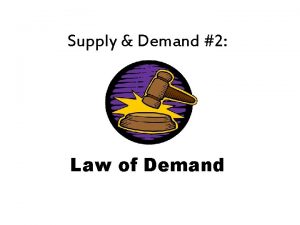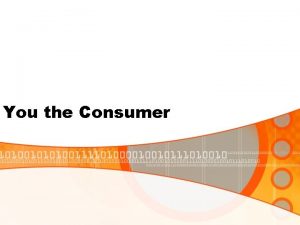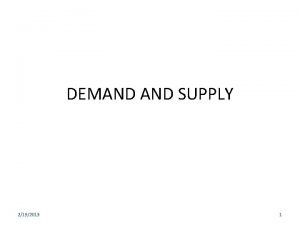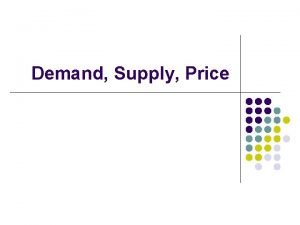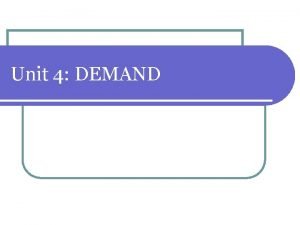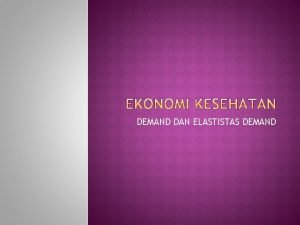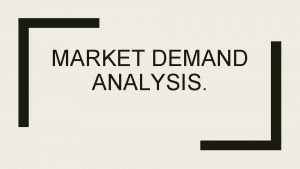2 1 Consumer Demand Consumers vs Customers Consumer

































































- Slides: 65

2. 1 Consumer Demand

Consumers vs. Customers Consumer: a person who uses a product Customer: a person who buys a product

A parent buying diapers for their baby. A teenager buying lunch for themselves. A girl buying a dress to wear to a wedding. A mother buying dinner for herself and her family. A brother buying headphones for his sister.

2. 2 Product Life Cycles

Every product has a life cycle. The basis of a product’s life cycle is based on consumer demand. Trends, technology and lifestyle changes affect consumers’ wants and needs therefore impacting the lifespan of a product. A product will typically go through five stages: Introduction, growth; maturity; decline, and decision point.

Introduction • The birth of a new product/service. • Expensive –Start up costs for machinery, product design and personnel. • Marketing is very expensive. • Enough stock must be carried by retailers and distributors so that anticipated demand can be met. • Can be risky because the demand for the product/service is not determined. People can only guess as to what the consumer’s needs or wants are. • Product is priced high to offset the high start up costs. • Usually “trend setters” or “Pioneers” will purchase the product/service first. They want to be the first to own it.

Growth Stage • Other consumers follow the trend setters to try the product. • Word of mouth from consumers can either make the product/service succeed or it can be a bust. • Advertising is heavily used at this stage. • P rofit will be at its’ greatest at this stage. • Competitors will create a similar product and add or change features in an attempt to capture some of the marketing share. • Barriers to entry Factors that prevent competitors from making a profit. • Small Market share • Expensive advertising • Cost of Research and development • Low end product A product that is cheap to manufacture and sells at a lower price than the original product/service.

Maturity Stage • Sales increase slowly • Manufacturers continue to make a profit • Initial starts up costs have been recovered now it is pure profit. • Marketers still keep the product in front of the consumer with advertising but it is not as heavy at this point. • Consumers are aware of the product/service and continue to purchase.

Decline Stage • Sales slow down. • The product/service has reached the maximum sell point. • At this point several options are available to companies: A small change in the product/service , more or different advertising, re designing or repackaging the product, Removing the product from the market.

Decision Point • • New and improved product Rebranding New Target market New product life cycle.



NON-TRADITIONAL LIFE CYCLES

Fads • A product/service or idea that was successful for a Short period of time. • It quickly fades out of the market as fast as it came into the market • Toys, novelty items (pet rock) songs.

Trends • • Large movement towards a Style or value Clothes Foods Lifestyles

Niche Markets • A small section of the market that a product/service dominates

Seasonal Markets • Products/services that are in high and low demands given the time of year. • E. g. Ski resorts, summer resorts, European destinations, ice cream, BBQ’s.

2. 3 The Consumer Market ● ● A consumer profile: the KIND of people most likely to be attracted to a specific product…Marketers then divide these consumers… Consumers into COHORTS (groups that share common characteristics and buying habits) Marketers use this information to identify two types of markets: Primary and Secondary markets

2. 3 The Consumer Market ● Primary Market= the most likely consumer ● Secondary Market= occasional consumers ● Companies spend most of their marketing efforts towards the Primary Market

2. 3 The Consumer Market Chart ● ● DEMOGRAPHICS: ARE THE STUDY OF OBVIOUS CHARACTERISTICS THAT CHARACTERIZE PEOPLE. EX: GENDER, AGE, FAMILY LIFE CYCLE, INCOME LEVEL, AND ETHNICITY AND CULTURE. PSYCHOGRAPHICS: IS A SYSTEM OF MEASURING CONSUMERS BELIEFS, OPINIONS, AND INTERESTS. EX: RELIGIOUS BELIEFS, TASTES IN MUSIC, LIFESTYLE, ATTITUDES TOWARD HEALTH, PERSONALITY TRAITS, AND OTHER PSYCHOLOGICAL FACTORS.

The Consumer Market Chart ● ● GEOGRAPHIC: IS WHERE CONSUMERS LIVE. EX: URBAN, SUBURBAN, AND RURAL PRODUCT USE STATISTICS: HOW FREQUENTLY CONSUMERS USE A SPECIFIC TYPE OF PRODUCT. EX: Users include heavy, medium, light and non users

Product Use Statistic Examples ● ● Marketers attempt to create brand loyalty in heavy user segment They will use advertising coupons, consumer loyalty cards, samples, and aggressive push strategies to gain loyalty.

Product Use Statistic Examples ● ● Point of Entry Non Users Families with new babies are targeted by manufacturers of baby products hoping to convince parents to use only their brands

A true Non User ● ● Composed of individuals who do no plan to use products in a category. The Marketers tasks is to create a new value equation for the non user that demonstrated the benefits of use for them. This is the most DIFFICULT consumer target because marketers must attempt to change consumers’ habits and opinions Here’s an example Cell Phones

Non user of a cell phone in the late 1990’s 1. 2. 3. Cell phones were expensive and individuals did not understand the benefits (cell phones had a negative value) The industry needed to enhance the benefits of cell phone use…. What could you as a marketer enhance? Give 2 examples

2. 4 Consumer Motivation ● Consumer Motivation – What motivates people to buy things?

Consumer Motivation ● Motivation is the biological, emotional, rational and/or social force that and directs behaviours ● Since buying is a behaviour, marketers need to understand motivation.

Consumer Motivation biological forces are linked to our most basic needs for ● survival ● these need to be satisfied first emotional forces include love, sympathy, joy, anger, fear, etc. ● ● ● can either motivate the consumer positively (like love) or negatively (like fear) most purchases mix of positive and negative rational forces are often in conflict with emotional ones ● ● ● rational forces deal with logic (does it make sense? ) ex: cost, convenience, safety, needs

Consumer Motivation societal forces are caused by other people ● ○ ○ friends, family and society in general celebrity endorsements are an example

Theories of Motivational theories are used to explain human ● behaviour Thorndike’s Law of Effect ● ○ ○ consumers are motivated to buy products that produce positive events and reduce negative events most purchases are influenced by both

Theories of Motivation Maslow’s Hierarchy of Needs ● ○ � � � ○ consumers respond to motivation according to levels of needs in this order: Physiological/Basic safety/security Affiliation/love Esteem Self-Actualization if these needs are met, the person may then be motivated by growth needs

Maslow’s Hierarchy of Needs

Alderfer’s ERG Theory 33 • Alderfer changed Maslow’s theory to include only 3 levels of humans needs: • Existence needs - physical and psychological needs for survival • Relatedness needs - needs for personal relationships • Growth needs - motivate a person to be personally productive

Alderfer’s ERG Theory 34

35 • Sales people: You will be assigned an item. You must convince people to buy your item using emotional motives. • Buyers: You get to go shopping! You have $200. Use RATIONAL decision making to decide if you will make the purchase.

2. 5 The Buying Decision

By the end of today, you will be able to explain the Buying Decision process.

When you go to Yorkdale to buy a pair of shoes. What are some things you think about?

The Buying Process ● When purchasing a large ticket (expensive) item, such as a car, consumers usually go though a six step process from the discovery of a need or want all the way to the evaluation of the product after the purchase.

The Buying Process Stages 1. Identifying a want or need 2. Criteria for satisfaction of the want or need are set (What are the standards you expect from the product? ) 3. Search for products that meet the criteria 4. A decision is made 5. A purchase is made 6. Evaluating the purchase

The Buying Decision Example 1. You turn 18, you get your license and you have some money for a car.

The Buying Decision Example 2. Criteria on what you want: determine the price you’re willing to pay, and the features you want. For example: $18 000 max, Power doors/windows, Ipod connection, air conditioning.

The Buying Decision Example 1. Search for all available car brands that meet your criteria: Honda Civic, Mazda 3 (1 year old), Hyundai Elantra

The Buying Decision Example 4. Decision is made: test drive them all, read reviews, special promotions.

The Buying Decision Example 5. Car is purchased!

The Buying Decision Example 4. Evaluate your decision – do you feel good or bad about your decision? Would you recommend it to others?

With your elbow partner discuss: Can the buying decision process by applied to all purchases? Explain.

● The buying process only works for large purchases made occasionally ○ ○ does not work for impulse purchases also does not work for product purchases where brand is not important

Mrs. Cruz’s Buying Decision http: //www. timer tab. com/

1. 2. 3. Write your name on the sticky note. Go shopping! Shop for a cell phone that you think best meets Mrs. Cruz's criteria. NOTE: You may not pick your own! Post your sticky note on the cell phone you have chosen.

2. 6 The Industrial/Institutional Consumer

By the end of the day you will be able to: Explain who an Industrial Consumer is Explain what Industrial Consumer and businesses motives are when they make purchases.

Industrial or Institutional Consumers • Work as buyers for companies, organizations, or government agencies. • They are authorized to buy products and services for the company.

ustrial or Institutional Consume • Demographics and psychographics are of little importance in profiling these buyers. • Why do you think they are of little importance for Industrial or Institutional Consumers? Explain.

• Consumers of industrial goods base their buying decisions on the wants or needs of the company. They are gatekeepers.

Geographic location is a key factor in an industrial consumer profiles. • • Shipping costs depend on the distance between the buyer and supplier. • Suppliers may choose to have factories closer to their international markets. • This will cause buyers to have heavy user profiles. • Heavy user profiles are important because discounts are usually offered to businesses who make large purchases often.

Rational Motivational Force • Professional buyers must be rational in the buying decisions. • Recall Rational: logic; does this make sense? • They are thinking about what is best for the business.

• Tender: a notice that the government is looking to purchase something. It contains the details of the proposed purchase, including the desired quantity, design specifications, and deadline for completing the order. • The government cannot, by law, arrange a major purchase without tender because of the potential for bribery and corruption.

• For example: • When the government wants to purchase something, they must first put out a tender. Suppliers will respond to the tender and the buyers will look for the best price or buy. • This also happens in the private sector (other businesses).

• A business makes 1 million shirts a year. • Each shirt requires 8 buttons. • The company will need to buy 8 million buttons. • What is the most attractive factor when the company is looking for buttons?

The main motives for these transactions are: Consumer demand Profitability

• Rational motives are usually bottom line motives, primarily focused on increasing sales and reducing expenses (profitability).

• There are many other motives that buyers may consider. • Quality increase reputation, have fewer breakdowns. • Convenience saves time. • Store appeal makes the shopping experience more pleasant.

• Each buying motive that moves the industrial or institutional buyer to make a purchase can be connected to the company’s financial success.

• You may take out your cell phone or computer to search for a supplier for the tshirt you have designed for Maple Leaf school!
 Clouds in the sky
Clouds in the sky Primary producers
Primary producers Dependent demand vs independent demand
Dependent demand vs independent demand Demand forecasting managerial economics
Demand forecasting managerial economics Inventory modeling
Inventory modeling Ang grapikong paglalarawan ng iskedyul ng demand
Ang grapikong paglalarawan ng iskedyul ng demand Distinguish between individual demand and market demand
Distinguish between individual demand and market demand Fiscal measures to correct deficient demand
Fiscal measures to correct deficient demand Dependent demand example
Dependent demand example Dependent demand items
Dependent demand items Individual demand vs market demand
Individual demand vs market demand Module 5 supply and demand introduction and demand
Module 5 supply and demand introduction and demand Unit 2 demand supply and consumer choice
Unit 2 demand supply and consumer choice 1. individual demand and consumer surplus
1. individual demand and consumer surplus Copyright
Copyright Unit 2 demand supply and consumer choice answer key
Unit 2 demand supply and consumer choice answer key Perfectly inelastic demand
Perfectly inelastic demand Consumer surplus and producer surplus
Consumer surplus and producer surplus Unit 2 demand supply and consumer choice
Unit 2 demand supply and consumer choice Unit 2 demand supply and consumer choice
Unit 2 demand supply and consumer choice Unit 2 demand supply and consumer choice
Unit 2 demand supply and consumer choice Characteristic of consumer behaviour
Characteristic of consumer behaviour Primary consumer
Primary consumer Changes in an individual's behavior arising from experience
Changes in an individual's behavior arising from experience Cengage
Cengage Consumer research in consumer behaviour
Consumer research in consumer behaviour What is a customer driven marketing strategy
What is a customer driven marketing strategy Communicating with customers
Communicating with customers Capturing value from customers
Capturing value from customers Cost of granting credit
Cost of granting credit Tcf training
Tcf training Build profitable relationships and create customer delight
Build profitable relationships and create customer delight Customer needs identification
Customer needs identification Types of sales promotion
Types of sales promotion Bargaining power of suppliers
Bargaining power of suppliers The greatest source of ideas for new products is:
The greatest source of ideas for new products is: How to deal with suspicious customers
How to deal with suspicious customers Promoting services and educating customers
Promoting services and educating customers The contest among sellers to win customers is known as
The contest among sellers to win customers is known as Customer as productive resources
Customer as productive resources Merli uri
Merli uri A whale watching company noticed that many customers
A whale watching company noticed that many customers Creating and capturing value
Creating and capturing value Using a single marketing strategy to reach all customers.
Using a single marketing strategy to reach all customers. The twofold goal of marketing is to attract new customers
The twofold goal of marketing is to attract new customers How to increase number of customers
How to increase number of customers Bargaining power of customers
Bargaining power of customers Types of customers in customer service
Types of customers in customer service Aer model marketing
Aer model marketing Attract new customers by promising superior value
Attract new customers by promising superior value Kfc data
Kfc data Disadvantages of buffet
Disadvantages of buffet Why satisfied customers defect summary
Why satisfied customers defect summary Stratxsimulations login
Stratxsimulations login Naomi jackson alabama
Naomi jackson alabama Strategies for developing loyalty bonds with customers
Strategies for developing loyalty bonds with customers Chapter 23 statement of cash flows
Chapter 23 statement of cash flows Minor customers
Minor customers Customers role in service delivery
Customers role in service delivery A summer resort rents rowboats to customers
A summer resort rents rowboats to customers A candy manufacturer wants to test consistency
A candy manufacturer wants to test consistency Salespeople do not represent customers to the company.
Salespeople do not represent customers to the company. Concentrated targeting
Concentrated targeting Marketing simulation managing segments and customers
Marketing simulation managing segments and customers Hostility curve
Hostility curve The cost of a meal might affect how customers
The cost of a meal might affect how customers












